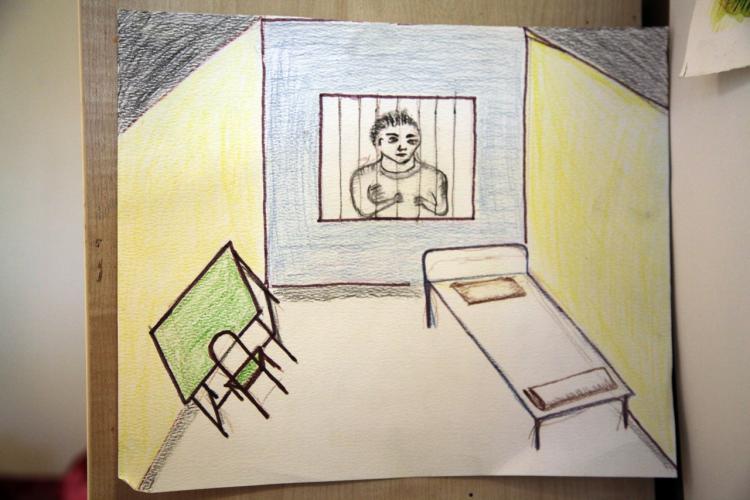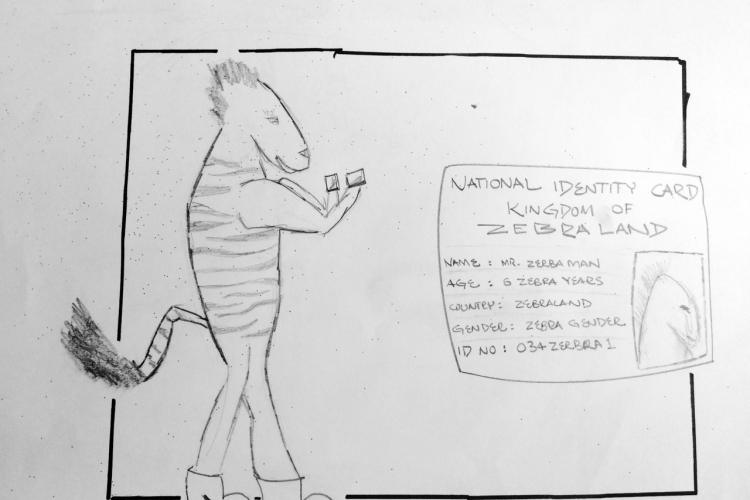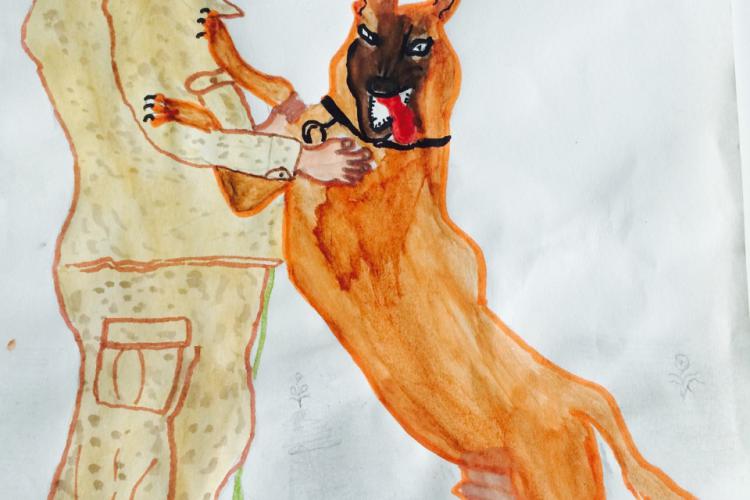Post by Dr Khadija von Zinnenburg Carroll, Researcher at the Centre for Criminology, University of Oxford. Khadija is working with Professor Mary Bosworth to create the Immigration Detention Archive.
I’ve been running media arts workshops inside the Colnbrook Immigration Removal Centre since I got security clearance in September 2015. For six hours at a time I go to Heathrow, just behind the airport, with my camera, tripod, and sound recorder. The ‘residents’ cram into the media room to learn how to use my camera. We set up the lights and a green, black, or painted background and practice taking portraits and making films of short performances. Some sing songs they’ve written and we are working on a music video to accompany those. Others request songs in the languages they alone speak in there, such as Roma, for instance.

Many sit and watch, and for those hours the media room is buzzing. I can’t keep up with the requests: How do I use the camera? How do I edit the image? How can I get a copy to my family to show them?
The desire for portraiture is so strong that it goes beyond the mere narcissism that we might associate to selfies. There is a self-identification and a way of communicating survival to loved ones in these self-portraits. They come especially dressed, check the outcomes, urge me to send me the pictures soon. We exchange emails, write letters using google translate, and I spend the rest of my week editing the images and thinking about what workshop to do next.
Time goes so quickly inside; there are no clocks and no phones to check. My hard drives are all full of images and only reluctantly do the residents leave the media room when it’s time―9:00pm―to be locked into their cells for the night.
I spent an evening session, 7:00 to 9:00pm, in the gym one night with a Slovakian resident who is particularly talented with the camera and wanted to film the workout. These are long slow tracking shots of men running in circles.

Some of the staff in the center think of the workshops as distractions for the interred. There is catharsis in the media room, a short recognition of a world in which knowledge and care is exchanged. Outsider Art has produced this kind of work in prisons and mental institutions since the beginning of the twentieth century at least. For me as an artist it’s an extraordinarily satisfying experience to see how making effects people. They’re dealing with depression, loneliness, and very difficult legal situations. Talking to me while being engaged in a process of making pictures and short films seems to give some relief. They are the most grateful people I have ever worked with. They beam at me and thank me profusely for coming. I admire their skills, collect all the artworks for the archive we are building at Oxford, and head home completely shattered. Leaving through the myriad of doors and being back outside is such a shock every time that I spend a lot of time after each workshop reflecting on their situations, and my privilege.
Now I’m gearing up to catalogue and digitize those works on paper that we have in the archive. There is very little information about each, and many of those that participated in my first workshop are already gone.
I’m also trawling through other archives, like the Refugee Council one at the University of East London. This has been collecting for over twelve years and has a dedicated staff and student body studying this impressive archive, run by Paul Dudman. Looking at the United Nations materials there reminds me of the length of this refugee crisis―the material looks dated but speaks to many familiar problems.

When I went to the Koestler Foundation Awards in Southbank a few weeks ago, I caught up with Edmund Clark, an artist who works with prisoners in HMP Grendon, Buckinghamshire, terror suspects, and related themes in a way that resonates with the project at Oxford and a previous one we developed for Artangel. One of the prisoners from Edmund’s group at HMP Grendon won a Koestler award, as did several of the Colnbrook residents. There is an exhibition and discussion of the Grendon men’s work at Ikon Gallery in Birmingham this month.
This blog entry is the first of a series I will do about my project as it develops. Future posts will include more of the work that we are making inside Colnbrook and other IRCs.
Any comments about this post? Get in touch with us! Send us an email, or post a comment here or on Facebook. You can also tweet us.
__________
How to cite this blog post (Harvard style):
Carroll, K. (2015) Being in Detention: Media Arts at Colnbrook IRC. Available at: https://www.law.ox.ac.uk/research-subject-groups/centre-criminology/centreborder-criminologies/blog/2015/11/being-detention (Accessed [date]).
Share:








